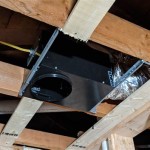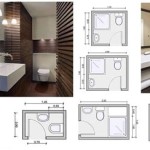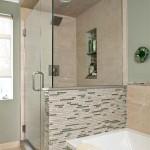Bathroom Wall Hung Vanity Units: Elevating Style and Saving Space
Bathroom design has evolved considerably, adapting to increasingly smaller living spaces and a growing demand for aesthetic appeal. Among the many innovations that cater to these needs, the wall hung vanity unit has gained significant popularity. This type of vanity, which is mounted to the wall, offers a unique blend of functional storage and contemporary style, making it a desirable choice for both new constructions and bathroom remodels.
The fundamental characteristic of a wall hung vanity is its floating appearance. By eliminating contact with the floor, it creates an illusion of spaciousness, a particularly valuable asset in compact bathrooms. This design also simplifies cleaning, eliminating the need to maneuver around the base of the vanity, reducing the accumulation of dust and moisture in hard-to-reach areas. Beyond its practical benefits, the aesthetic impact of a wall hung vanity is undeniable. It adds a sleek, modern touch to any bathroom, contributing to a cleaner and more minimalist ambiance.
The selection of a wall hung vanity unit involves careful consideration of several factors, including size, material, style, and installation requirements. The size of the vanity should be proportionate to the bathroom's dimensions, ensuring that it provides adequate storage without overwhelming the space. The material choice impacts both the vanity's durability and its aesthetic appeal, with options ranging from wood and laminate to more modern materials like glass and metal. The style should complement the overall bathroom design, whether it's a classic, contemporary, or minimalist theme. Finally, proper installation is crucial for the vanity's stability and longevity, often requiring professional assistance to ensure secure mounting to the wall.
Space Optimization and Visual Appeal
One of the primary advantages of a wall hung vanity unit is its ability to maximize space utilization. By lifting the vanity off the floor, it frees up valuable surface area, making the bathroom feel less cluttered and more spacious. This is especially beneficial in smaller bathrooms where every inch counts. The open space beneath the vanity also provides an opportunity to store items like baskets or small stools, further enhancing the functionality of the area.
The visual impact of a wall hung vanity is equally significant. The floating design creates a sense of lightness and airiness, contributing to a more open and inviting atmosphere. This effect is further enhanced by the clean lines and minimalist aesthetic of many wall hung vanity designs. The absence of legs or a base creates a seamless transition between the vanity and the floor, promoting a more streamlined and modern look. This design choice can significantly elevate the overall aesthetic of the bathroom, transforming it into a stylish and functional space.
Furthermore, the exposed floor space beneath the vanity allows for better light distribution, reducing shadows and making the bathroom brighter. This improved lighting can enhance the perceived size of the room and create a more pleasant and welcoming environment. The combined effect of increased space, enhanced visual appeal, and improved lighting makes a wall hung vanity unit a valuable asset in any bathroom design.
Material Selection and Durability
The choice of materials for a wall hung vanity unit is crucial for both its aesthetic appeal and its long-term durability. Common materials include wood, laminate, MDF (Medium-Density Fiberboard), and more modern options like glass, acrylic, and metal. Each material offers unique advantages and disadvantages in terms of cost, durability, maintenance, and aesthetic qualities.
Wood vanities offer a classic and timeless look, providing warmth and character to the bathroom. However, wood is susceptible to moisture damage, requiring careful sealing and maintenance to prevent warping, rotting, or staining. Laminate vanities are a more affordable alternative, offering a wide range of colors and patterns. They are also more resistant to moisture than wood, making them a practical choice for bathrooms. MDF vanities offer a smooth surface that is ideal for painting or applying veneers. They are also relatively affordable and resistant to warping, but less durable than solid wood.
Glass and acrylic vanities offer a modern and sleek aesthetic, often used in contemporary bathroom designs. Glass is highly resistant to moisture and stains, but can be prone to scratches and chips. Acrylic is a lightweight and durable alternative to glass, offering similar aesthetic qualities. Metal vanities are another modern option, known for their durability and resistance to moisture. They often feature a minimalist design and can be combined with other materials like glass or wood to create a unique look.
Regardless of the material chosen, it is essential to select a vanity with a high-quality finish that is specifically designed for bathroom environments. This will help protect the vanity from moisture, stains, and other potential damage, ensuring its longevity and maintaining its aesthetic appeal.
Installation Considerations and Weight Capacity
Proper installation is paramount for the safety and functionality of a wall hung vanity unit. Unlike floor-standing vanities, wall hung vanities rely entirely on the wall for support. Therefore, it is crucial to ensure that the wall is structurally sound and capable of bearing the weight of the vanity, as well as the items stored within it.
The installation process typically involves attaching the vanity to wall studs or using specialized mounting brackets that distribute the weight evenly across the wall. The type of mounting hardware required will depend on the weight and size of the vanity, as well as the type of wall construction. It is essential to follow the manufacturer's instructions carefully and to use appropriate tools and materials to ensure a secure and stable installation.
In some cases, it may be necessary to reinforce the wall studs or add additional support to ensure that the wall can handle the weight of the vanity. This is particularly important if the vanity is made of heavy materials like stone or concrete, or if it will be used to store heavy items. Consulting with a professional contractor or plumber is highly recommended to assess the wall's structural integrity and to determine the best installation method.
Furthermore, it is important to consider the plumbing requirements for the vanity during the installation process. The drainpipe and water supply lines must be properly connected to the vanity, ensuring that there are no leaks or other issues. This may require adjusting the existing plumbing or installing new pipes, which should be done by a qualified plumber.
Finally, it is crucial to regularly inspect the vanity and its mounting hardware to ensure that it remains securely attached to the wall. Any signs of loosening or damage should be addressed promptly to prevent potential accidents or damage to the wall.
By carefully considering these installation considerations and weight capacity factors, one can ensure that a wall hung vanity unit is installed safely and securely, providing years of reliable service and enhancing the beauty and functionality of the bathroom.

Harbour Clarity 600mm Wall Mounted Vanity Unit Basin Tap Warehouse

Buy Sonix 800 2 Draw Wall Hung Bathroom Vanity Unit Grey

Aquila 800mm Wall Hung Vanity Unit With Basin And Matt Black Handles In Graphite Aqfr008

Contea Bathroom Wall Hung Vanity Unit 2 Drawers Buy At City

Bathroom Wall Hung Vanity Unit Sink Cabinet Wash Basin Storage Drawer 800mm

Harbour Virtue 600mm Wall Hung Vanity Unit With Led Illumination Matt Black Handle Basin Tap Warehouse

Linen Textured Grey 800 X 450mm Basin Wall Mounted Vanity Unit Includi Wise Bathrooms

Harbour Virtue 800mm Wall Hung Vanity Unit With Led Illumination Matt Black Frame Shelf And Handle Basin Drench

Core Oak Wall Hung Vanity Unit Luxury Bathrooms And Tiles

Wall Hung Rustic Vanity Unit 600mm Victorian Plumbing
Related Posts







